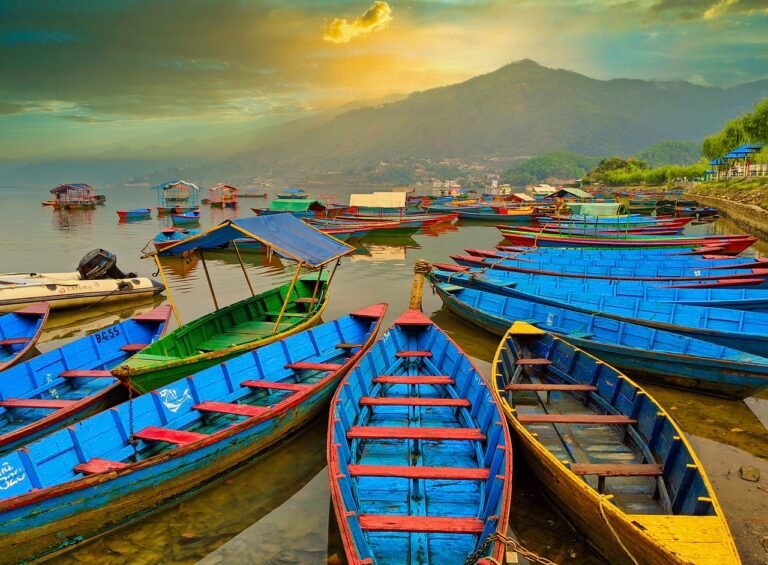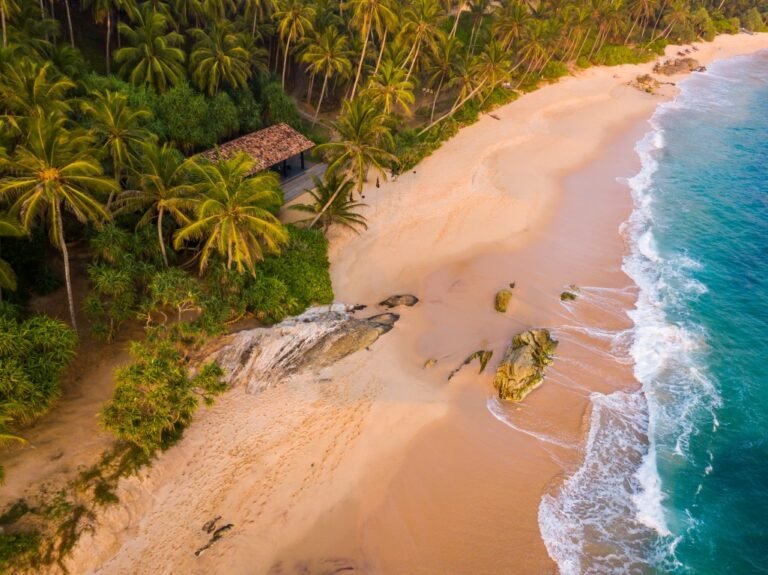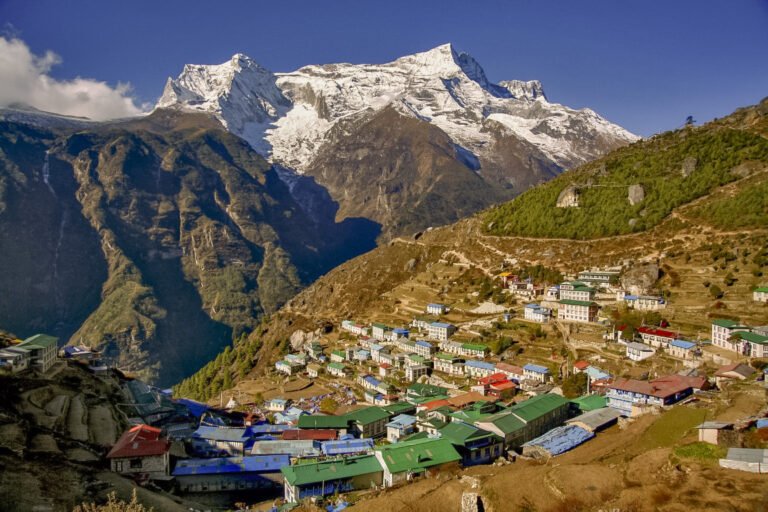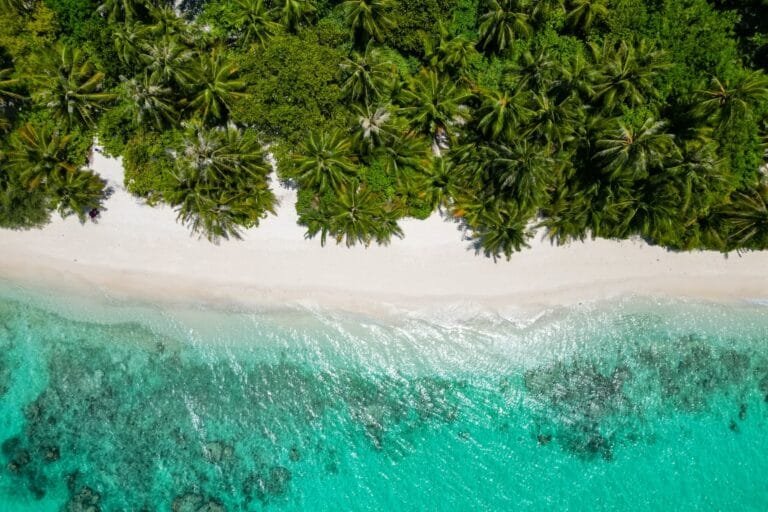Why Travel to Pakistan?
When considering our next travel destination, Pakistan might not be the first place that comes to mind, but it should undoubtedly be on our list. This vibrant country offers a unique blend of history, culture, and natural beauty waiting to be explored. In this Pakistan travel guide, I’ll explore some compelling reasons to visit Pakistan and discover what makes it a hidden gem in the world of tourism.
One of the primary attractions for tourists is Pakistani culture. From its diverse ethnic groups to its centuries-old traditions, Pakistan provides a mesmerizing cultural experience. Visitors can explore different bazaars filled with traditional crafts and sample delicious local cuisine that reflects a fusion of Asian flavors.

Moreover, tourism in Pakistan offers breathtaking landscapes ranging from the towering peaks of the Himalayas and Karakoram ranges to lush green valleys like Swat and Hunza. Adventure seekers will find plenty of opportunities for trekking, mountaineering, and exploring untouched natural environments.
Beyond its natural beauty and cultural richness, another reason to visit Pakistan is its historical significance. The country is home to numerous UNESCO World Heritage Sites, such as Mohenjo-Daro and Taxila, which offer glimpses into ancient civilizations.
Whether drawn by adventure or eager to immerse yourself in a new culture, Pakistan promises an unforgettable journey of discovery at every turn.
Essential Travel Tips for Visiting Pakistan
When planning a trip to Pakistan, it’s essential to be well-prepared to ensure a smooth and enjoyable experience. This Pakistan travel guide offers key tips to help you navigate this diverse country’s vibrant culture, stunning landscapes, and rich history.
1. Get Your Visa Sorted Ahead of Time
Pakistan now offers an e-visa system for many countries, which simplifies the process. Apply for your visa online and ensure you have a printed copy before arriving.
2. Dress Modestly, Especially in Rural Areas
Pakistan is a conservative country, and modest dress is essential to show respect for the local culture. For women, long skirts or pants and shirts with sleeves are ideal, while men should avoid shorts in many areas.
3. Respect Local Customs and Traditions
Understanding and respecting local customs is crucial. For instance, in many areas, avoid public displays of affection, be mindful of prayer times, and appreciate the separation of genders in mosques and some public spaces.
4. Show Respect When Visiting Religious Sites
When entering mosques or other religious sites, dress conservatively, remove your shoes, and keep your voice low. Photography may be restricted, so check with a guide or local before taking photos.
5. Be Aware of Safety and Security Updates
While Pakistan is generally safe for travelers, some areas may require extra caution. Check the latest travel advisories and speak with locals or guides for advice on which areas to avoid.
6. Ask for Permission Before Taking Photos
While Pakistan has beautiful landscapes and fascinating people, always ask for permission before taking photos of locals, especially women and children, to respect their privacy.
7. Prepare for Prayer Times and Friday Closures
Pakistan observes five daily prayers, and many businesses and sites may close or slow down during prayer times. Fridays are a holy day, so some places may have altered hours or be closed.
8. Learn a Few Basic Urdu Phrases
While English is widely spoken in cities, learning a few Urdu phrases can help you connect with locals and make travel easier. Common words like “Shukriya” (Thank you) and “Assalam-o-Alaikum” (Hello/Peace be upon you) are well-received.
9. Plan Your Itinerary Around Weather and Altitude
Pakistan has a diverse climate and geography. Northern areas like Hunza and Skardu are best visited in summer (May–September), while the southern cities like Karachi are accessible year-round. Be aware of the altitude if you plan on trekking.
10. Carry Cash Along with a Debit or Credit Card
Cash is still the most common form of payment in many parts of Pakistan, especially in rural areas. Carry enough Pakistani rupees for smaller purchases, though significant hotels and restaurants in cities may accept cards.
11. Get a Local SIM Card for Better Connectivity
Staying connected is essential for navigation and communication. You can quickly get a local SIM card (Jazz, Zong, or Telenor) at the airport or in major cities. Just have your passport ready for registration.
12. Use Registered Transportation Services
For safety, especially in cities, use registered taxi services or ride-hailing apps like Careem or Uber. In rural areas, arrange transportation through your hotel or a reputable guide.
13. Stay Hydrated but Avoid Tap Water
Pakistan can be hot and dry, so stay hydrated by drinking bottled or filtered water. Avoid tap water and ice cubes in drinks to prevent any stomach issues.
14. Try the Local Cuisine, but Go Easy at First
Pakistani food is delicious but can be pretty spicy and rich. Start with mild dishes and ease into spicier foods. Make sure to catch dishes like biryani, karahi, and kebabs.
15. Hire a Local Guide for Exploring Rural Areas
To explore remote or culturally sensitive regions like the Kalash Valleys, Thar Desert, or tribal areas, hire a local guide to help you navigate and provide insights into the area.
16. Keep a Flexible Itinerary and Plan for Extra Travel Time
Road conditions can vary, and travel times can be longer than expected in mountainous regions. Allow for some flexibility in your schedule to accommodate delays and unexpected adventures.
17. Understand the Currency and Exchange Rates
Pakistan uses the Pakistani Rupee (PKR). It’s helpful to carry smaller bills for local markets and taxis, and it’s advisable to exchange money in banks or official exchange centers for better rates.
18. Embrace the Warm Hospitality
Pakistanis are known for hospitality; they may often invite you for tea or a meal. Accepting such invitations (when safe) can lead to memorable experiences and genuine cultural exchange.
By keeping these essential tips in mind while exploring Pakistan’s breathtaking landscapes, you’ll be able to appreciate what this remarkable country has to offer fully.
Understanding the Costs: Budgeting Your Trip to Pakistan
Understanding the costs involved is essential for creating a realistic trip budget. As a diverse and culturally rich destination, Pakistan offers travelers a range of experiences that can fit various budgets. Whether you’re exploring the lively streets of Karachi or the stunning landscapes of Hunza Valley, knowing how to allocate your funds will enhance your travel experience.
Here’s a guide to understanding and budgeting for a trip to Pakistan, covering the main costs to expect and how to keep expenses under control:
1. Flights and Visa Costs
Flights: International flight prices to Pakistan vary greatly depending on your location and season. From the U.S. or Europe, expect to pay around $900–$1,500 for a round-trip ticket. Regional flights from the Middle East or Southeast Asia are typically more affordable, often between $300–$600.

Visa: Pakistan now offers an e-visa system for many nationalities. The visa fee ranges from $20 to $60 depending on your nationality and type of visa, with single-entry tourist visas being the most common.
2. Accommodation Costs
Budget Hotels & Guesthouses: In most cities, you can find affordable guesthouses and budget hotels ranging from $10 to $25 per night. Basic but clean, these are popular options for budget travelers.
Mid-Range Hotels: For more comfort, expect to pay around $30–$60 per night for a mid-range hotel with better amenities, especially in major cities like Lahore, Islamabad, and Karachi.

Luxury Hotels: Top-tier hotels in Pakistan’s major cities cost $100–$300 per night. These hotels are often part of international chains and offer high-end facilities like pools, gyms, and fine dining.
3. Food and Dining Costs
Street Food & Local Eateries: You can enjoy delicious Pakistani street food for as little as $1–$3 per meal. Try classics like biryani, naan, and kebabs, which are affordable and available widely.
Mid-Range Restaurants: For more comfortable dining in a local restaurant, expect to pay around $5–$10 per person. Which includes a range of regional dishes and often comes with large portions.
Fine Dining: Prices at high-end restaurants in major cities can range from $15–$30 per person, especially in international or upscale Pakistani restaurants.
4. Transportation Costs
Local Transport: Public transportation, such as buses and rickshaws, is highly affordable. Fares are as low as $0.20–$1 for short distances within a city. Rickshaws may cost a bit more, depending on your bargaining skills.
Ride-Hailing Services: Services like Uber and Careem are available in larger cities. Short rides typically cost around $1–$5, depending on distance and traffic.
Intercity Travel: For longer distances, buses and trains are budget-friendly. For example, a bus ticket between Lahore and Islamabad costs around $10–$20. Domestic flights between major cities are also available, generally costing around $50–$100 depending on the season.
5. Tours and Excursions
Guided Tours: A day tour with a local guide in cities like Lahore or Karachi might cost around $20–$40 per person. Group tours or private guides for excursions to northern areas like Hunza or Skardu may cost more, typically ranging from $50 to $200, depending on the length and type of tour.
Adventure Activities: Pakistan offers trekking, mountaineering, and other outdoor activities in the north. Costs vary, but expect to pay $100–$300 for organized treks (excluding equipment rental).
6. Entrance Fees
Historical Sites: Entrance fees to historical and cultural sites are usually nominal, ranging from $1–$5. Some popular sites, such as the Lahore Fort and Badshahi Mosque, may charge slightly higher prices, but usually no more than $5–$10 for foreigners.
National Parks: Entrance fees for parks like Deosai and Khunjerab National Park are also minimal, typically around $5–$10.
7. Sim Cards and Internet Access
Local SIM cards (Jazz, Zong, Telenor) are inexpensive and offer data plans for around $5–$10 for 10–20 GB of data. Wi-Fi is widely available in hotels and cafes in urban areas, so you can keep your data usage low by connecting when possible.
8. Budgeting Tips for Pakistan
- Travel During the Off-Season: The peak season for northern areas is summer (May–September). Visiting in the shoulder season can save you money on accommodation and flights.
- Opt for Local Food: Eating where the locals do is affordable and a great cultural experience.
- Book Transport in Advance: Booking in advance for intercity buses and trains may save you money and secure a seat, especially during peak travel times.
- Bargain Wisely: Bargaining is expected in markets and with local transport providers like rickshaws. Politely negotiate a fair price before agreeing on anything.
- Travel Insurance: Travel Insurance can be helpful if you plan to trek or participate in adventure activities. It is relatively inexpensive and can provide peace of mind in case of unexpected events.
Sample Daily Budget
Here’s a rough idea of a daily budget in Pakistan depending on travel style:
- Budget Traveler: $20–$35 (hostels, local food, public transport, minimal entrance fees)
- Mid-Range Traveler: $50–$80 (mid-range hotels, some guided tours, taxis/ride-sharing, mid-range dining)
- Luxury Traveler: $150+ (luxury accommodations, private transport, high-end dining, organized tours)
Total Estimated Trip Cost for 10 Days
- Budget Trip: $300–$500
- Mid-Range Trip: $700–$1,000
- Luxury Trip: $1,500+
By understanding these cost factors with this Pakistan Travel Guide, you can create a well-rounded budget that ensures an enjoyable and stress-free adventure through this captivating country.
Top Destinations You Must Visit in Pakistan
Pakistan offers an array of destinations that promise unforgettable experiences for travelers. This Pakistan travel guide highlights some top destinations you must visit to appreciate the country’s diverse beauty truly.
1. Hunza Valley
- Why Visit: Known for its stunning landscapes, Hunza Valley is a gem in Pakistan’s Gilgit-Baltistan region. The valley is surrounded by majestic mountains, including Rakaposhi and Ultar Sar, with charming villages, apricot orchards, and terraced fields.

- Top Highlights: Karimabad town, Baltit and Altit forts, Attabad Lake, Passu Cones, and the Eagle’s Nest viewpoint for sunsets and panoramic views of the valley.
2. Skardu
- Why Visit: Often referred to as the gateway to the high peaks of the Karakoram, Skardu is an adventurer’s paradise. It’s a base for trekkers heading to K2, the world’s second-highest mountain, and offers spectacular landscapes, peaceful lakes, and historic forts.

- Top Highlights: Shangrila Resort, Upper Kachura Lake, Sheosar Lake, Deosai National Park, and Shigar Fort, along with the scenic road to Khaplu.
3. Swat Valley
- Why Visit: Known as the “Switzerland of Pakistan,” Swat Valley is famous for its lush green valleys, snow-capped mountains, and beautiful rivers. It’s an excellent destination for those seeking tranquility and outdoor activities.

- Top Highlights: Malam Jabba (a popular ski resort), Mingora, Saidu Sharif, Fizagat Park, and the picturesque villages of Bahrain and Kalam.
4. Fairy Meadows and Nanga Parbat Base Camp
- Why Visit: Fairy Meadows, located at the base of Nanga Parbat (the “Killer Mountain”), is a lush alpine meadow offering breathtaking views of the towering peak. It’s a popular spot for trekking and camping.

- Top Highlights: Trekking to the Nanga Parbat Base Camp, experiencing the traditional wooden huts at Fairy Meadows, and stargazing at one of the world’s most scenic locations.
5. Neelum Valley
- Why Visit: Located in Azad Jammu and Kashmir, Neelum Valley is a paradise for nature lovers with its rivers, forests, and waterfalls. It’s one of Pakistan’s most beautiful valleys and is perfect for trekking, camping, and immersing yourself in nature.

- Top Highlights: Keran, Sharda, Kel, and Arang Kel, along with various scenic hiking trails and riverside spots.
6. Mohenjo-Daro
- Why Visit: Mohenjo-Daro, one of the oldest known urban settlements, dates back to 2500 BCE. This UNESCO World Heritage Site in Sindh is a must-visit for history buffs interested in the ancient Indus Valley Civilization.

- Top Highlights: The ancient city ruins, including the Great Bath, residential and administrative structures, and the on-site museum.
7. Lahore
- Why Visit: Lahore, Pakistan’s cultural capital, is known for its vibrant arts scene, rich history, and incredible Mughal architecture. It’s a bustling city with a distinct blend of historical sites and modern culture, perfect for history enthusiasts and food lovers.
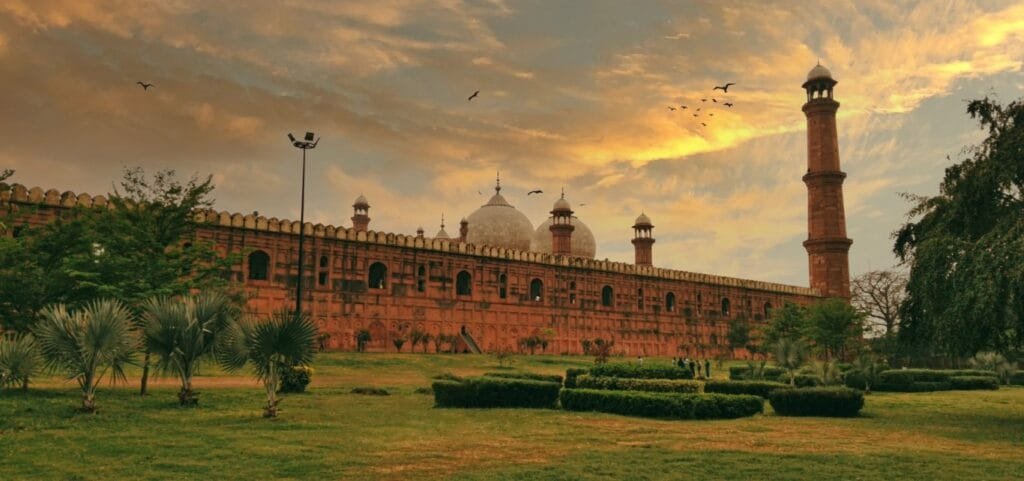
- Top Highlights: Lahore Fort, Badshahi Mosque, Shalimar Gardens, Wazir Khan Mosque, and the famous Wagah Border ceremony. Don’t miss the food scene at places like Gawalmandi Food Street.
8. Islamabad and Rawalpindi
- Why Visit: Islamabad, Pakistan’s capital, is a serene and green city known for its stunning modern architecture, wide boulevards, and natural beauty. Rawalpindi, its twin city, offers a more traditional and bustling vibe, with colorful bazaars and historical sites.

- Top Highlights: Faisal Mosque, Pakistan Monument, Daman-e-Koh viewpoint, Rawal Lake, Saidpur Village, and the bustling Raja Bazaar in Rawalpindi.
Each destination in Pakistan offers unique experiences that cater to different interests – from history enthusiasts and adventure seekers to those simply looking for natural beauty or cultural immersion.
What to Expect When Traveling Across Different Regions of Pakistan
When embarking on a journey across Pakistan, travelers can expect to experience a rich blend of landscapes, cultures, and traditions that vary significantly from one region to another. This Pakistan Travel Guide will help you navigate the diverse regions and prepare for the unique experiences each offers.

In the north, the majestic Himalayan and Karakoram Mountain ranges dominate the landscape. Adventure enthusiasts can explore breathtaking valleys like Hunza and Swat or trek to iconic peaks such as K2. The northern regions also have various cultural festivals celebrating local traditions and heritage.
Moving towards central Pakistan, you’ll encounter bustling cities like Lahore and Islamabad. Lahore is renowned for its vibrant arts scene, historical landmarks like the Badshahi Mosque and Lahore Fort, and delicious street food. Islamabad offers a more modern contrast with its organized layout, lush greenery, and attractions such as Faisal Mosque.

In southern Pakistan lies Karachi, the country’s largest city. It serves as an economic hub with a mix of colonial architecture and contemporary skyscrapers. The coastal town offers beautiful beaches along with diverse culinary experiences reflecting its multicultural population.
Traveling through different regions also means experiencing mixed climates, from snow-capped mountains in the north to arid deserts in the south. Travelers must plan accordingly for weather conditions specific to each area during their visit.
Overall, traveling across Pakistan promises an unforgettable journey filled with scenic beauty, warm hospitality from locals eager to share their culture with visitors, and memories that will last a lifetime!
The Best Time to Visit
The best time for a comprehensive tour of Pakistan is from September to November and March to May when weather conditions are generally mild and suitable across most regions. These seasons allow you to experience the vibrant cultural scenes in urban areas, enjoy moderate temperatures in the plains, and comfortably explore the stunning natural beauty of the northern mountains. Summer (June to August) is ideal only for those interested in high-altitude trekking and exploring northern regions, while winter (December to February) is best for those focused on cultural tours in southern and central Pakistan.
Conclusion
In conclusion, Pakistan is a destination of unparalleled diversity, offering everything from rough mountains to historic cities and bustling markets to serene landscapes. This Pakistan travel guide has covered the essential aspects of visiting Pakistan, from practical tips and budgeting insights to must-see destinations and ideal travel seasons.
Whether you’re a nature enthusiast, history buff, or food lover, Pakistan has something unique to offer every Traveler. Its warm hospitality, vibrant culture, and breathtaking landscapes promise an unforgettable experience that’s both enriching and inspiring. By preparing well and embracing the unique experiences across Pakistan’s regions, your journey to this remarkable country will be filled with discovery and lasting memories.

